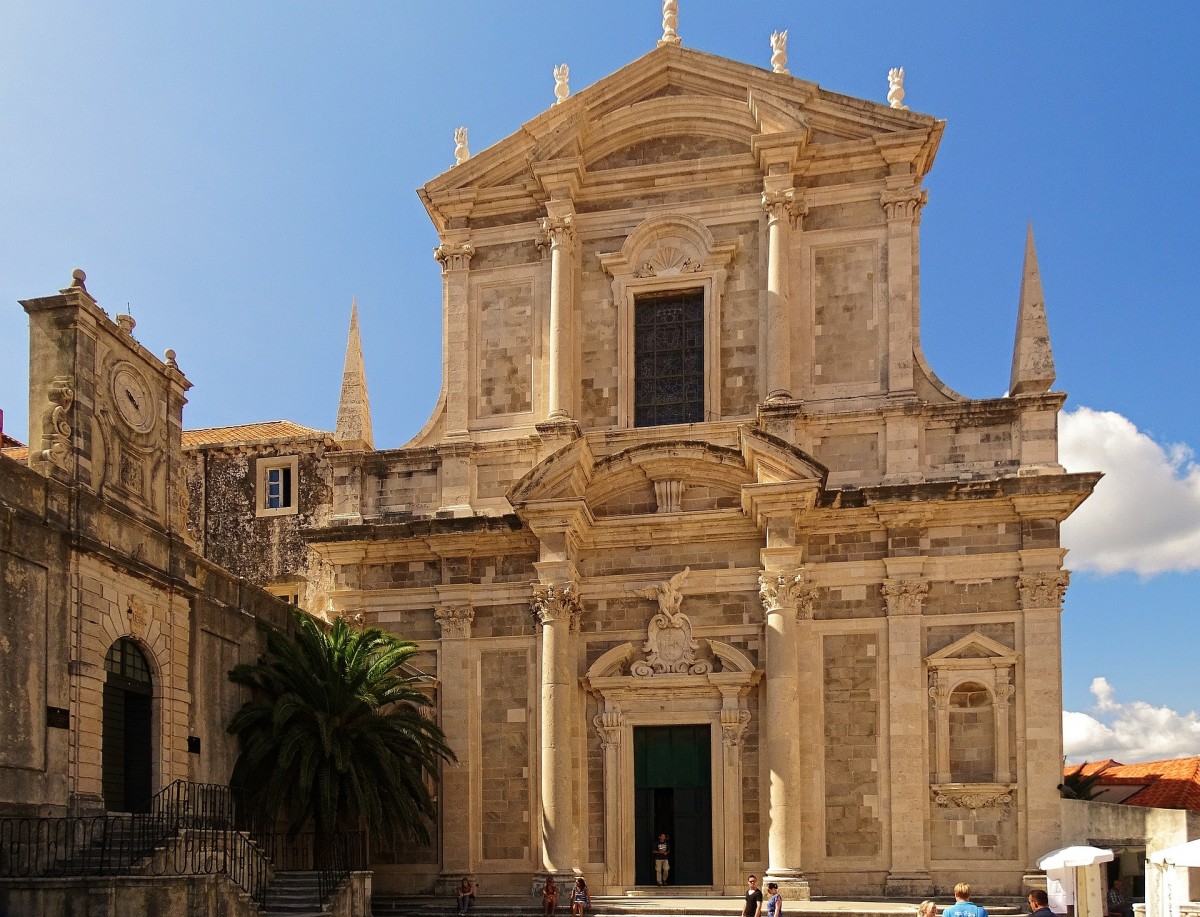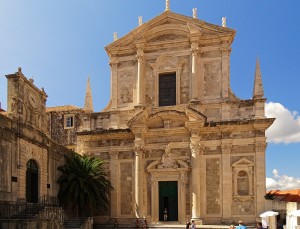The Assumption Cathedral of the Blessed Virgin Mary is a Roman Catholic cathedral in Dubrovnik in south Croatia, is the seat of the Diocese of Dubrovnik. A diocese, from the Greek term διοίκησις, meaning “administration”, is the district under the supervision of a bishop – a diocese is divided into parishes
The cathedral was built on the location where several former cathedrals, including 7th, 10th and 11th century were build, and a 12th building in Romanesque style. The English king ‘Richard the Lion Heart’ donated money to help build the basilica, as an offer in fulfilment of his vow for having survived a shipwreck near the island of Lokrum in 1192 on his return from the Third Crusade.
This church building was largely destroyed in the earthquake of 1667. The Senate of Dubrovnik appealed to the Italian architect Andrea Bufalini of Urbino, who sent a model for the new church in Baroque style with a nave, two aisles and a cupola. Several other Italian architects all working with local and imported stonemasons, completed the Cathedral over the next thirty years. The architect Tomaso Napoli from Palermo, made several crucial changes to the original plans including the use of a cross vault and the opening of large windows at the upper level – giving the whole interior a lighter and brighter feel. The building was finished in 1713 by the Dubrovnik architect Ilija Katičić. The cathedral was damaged by at least one shell during the Siege of Dubrovnik during the war in the early 1990’s – the damage has since been repaired.
The portal of the facade is flanked by four Corinthian columns, on top of the central part is a large Baroque window with a triangular gable and a balustrade with statues of different saints. The deep niches in the facade contains statues of Saint Blaise – the patron saint of Dubrovnik – and Joseph with Child. The lateral sides of the cathedral are rather plain, articulated by pillars and semicircular windows, the side entrances are smaller than the frontal portal. The main altar holds a multi-panelled painting by Titian, portraying a version of the Assumption of the Virgin. This painting probably dates from 1552, the side altars hold paintings of Italian and Dalmatian masters of later centuries.
The Cathedral treasury shows items that show the many connections Dubrovnik had with other main seaports in the Mediterranean Sea. The treasury holds relics from the 11th to 18th centuries; not only from local masters but also from Venice, Byzantium, and the Orient. Its most important object is the gold-plated arm, leg and skull of Saint Blaise – the patron saint of Dubrovnik. The head is in the shape of a crown of Byzantine emperors, adorned with precious stones and enamelled medals. The treasury holds also a relic of the True Cross, other outstanding items in the treasury are a number of church vessels (13th – 18th century), many of them manufactured by local goldsmiths, and a number of valuables, such as the Romanesque-Byzantine icon of Madonna and Child from the 13th century and paintings, among others, by Padovanini, Palma il Giovane, Savoldo, Parmigianino and P. Bordone.


